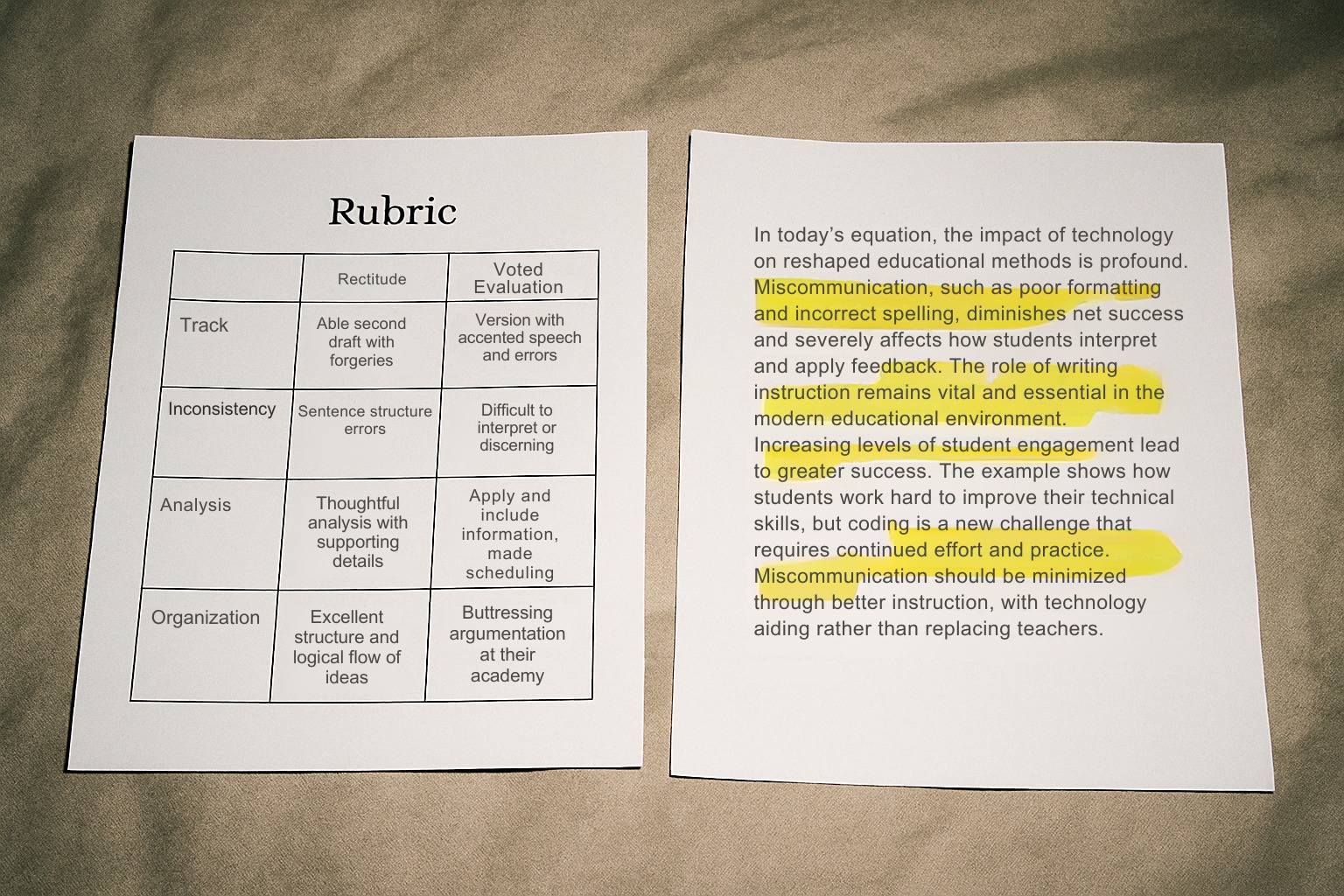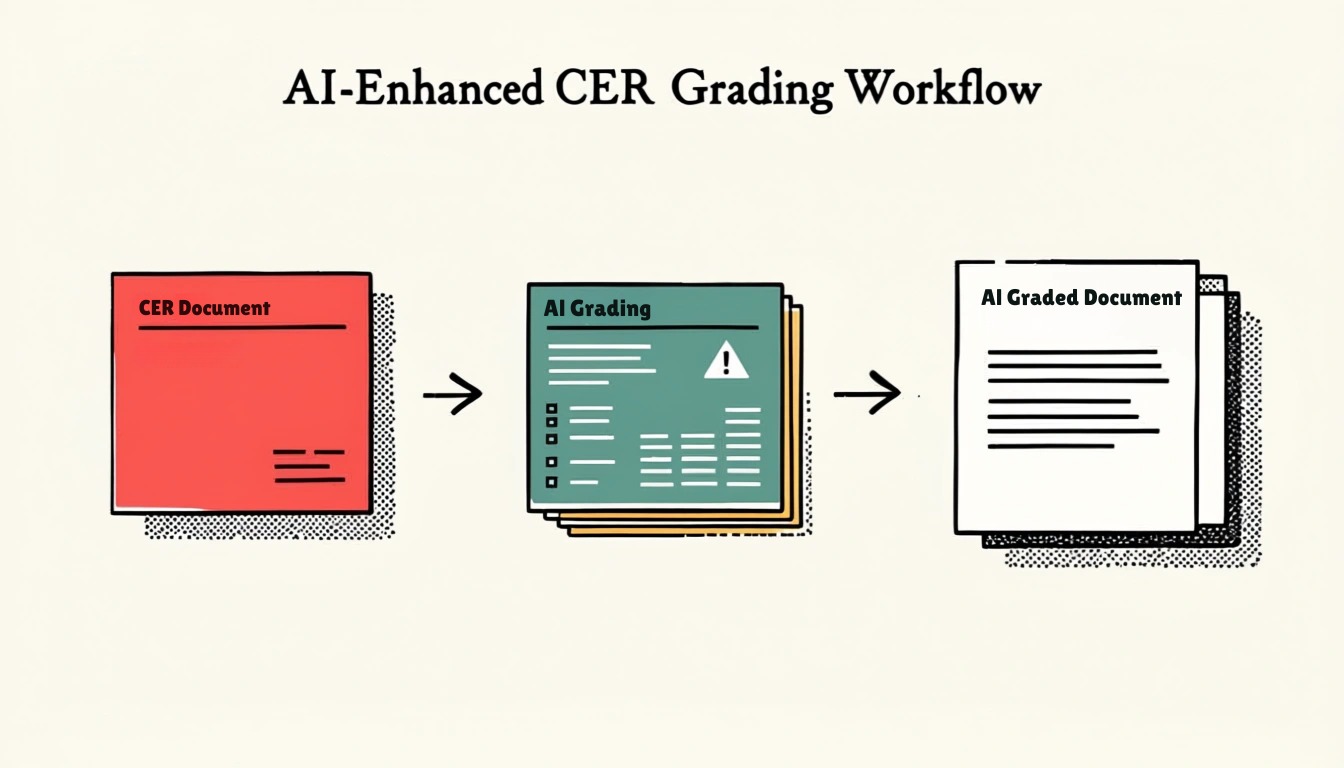The Logic Beneath the Craft
Writing, at its best, is reasoning made visible.
Yet in many middle school classrooms, that reasoning is often buried beneath red ink, rushed comments, and the relentless ticking of the grading clock. Teachers like Ms. Lopez know the struggle well—every essay reveals a student’s thinking, but uncovering it takes time that few educators have. The question is as old as education itself: how can teachers cultivate logic and depth in student writing without sacrificing their evenings and weekends?
Enter the quiet promise of AI essay graders for teachers. These tools don’t replace human insight—they extend it. They can scan essays, recognize claims, and trace the invisible thread connecting evidence to reasoning. For some, this feels like an automation dream; for others, an intrusion into the craft. The truth, as always, lies somewhere in the middle.
AI doesn’t erase the teacher’s vision—it refracts it, much like a prism revealing hidden colors in light. When paired with standards based grading rubrics, it becomes not a shortcut, but a second lens: an intelligent companion that highlights what the human eye already suspects.
This playbook explores how grading essays with AI can enhance Claim-Evidence-Reasoning instruction, uphold academic integrity, and restore the most precious classroom resource of all—time.

Why Claim–Evidence–Reasoning Still Reigns
The Claim-Evidence-Reasoning (CER) framework endures because it mirrors how thought itself unfolds.
A claim answers, What do you believe?
Evidence responds, How do you know?
Reasoning explains, Why does it matter?
By middle school, these questions converge across disciplines—from English essays to science lab reports. The Common Core State Standards ask students to reason, analyze, and justify as early as grade six. Yet, for every hour spent teaching CER, teachers often spend three grading it.
That imbalance isn’t sustainable.
An AI essay checker for teachers can recognize patterns even seasoned educators might miss when under time pressure—missing transitions, unsupported claims, or weak reasoning links. These tools don’t dictate scores; they diagnose tendencies.
Think of CER writing as an ecosystem. The claim is the root, the evidence the soil, and the reasoning the sunlight that sustains growth. AI acts as a sensor within that ecosystem—measuring conditions, spotting deficiencies, and suggesting where nourishment is needed most.
“Reasoning is not automation’s rival—it’s automation’s measure of success.”
Standards-Based Grading Rubrics and the Pursuit of Fairness
Grading is not merely mechanical; it’s moral. To assign value to a student’s reasoning is to weigh effort, clarity, and truth-seeking. That’s why standards based grading rubrics exist—to replace personal intuition with shared criteria and clear learning targets.
But even identical rubrics can yield different outcomes. Two teachers, Mr. Patel and Ms. Lopez, can use the same rubric and diverge widely in scoring. RAND studies have confirmed this variability across districts.
When an AI essay grader for teachers is trained on the rubric itself—its descriptors, anchor papers, and language—it doesn’t replace the teacher’s authority. It mirrors it. It highlights where writing meets or misses expectations and grounds every comment in evidence.
If a rubric states, “Reasoning clearly connects evidence to claim,” AI can locate the very sentence where that connection falters. Fairness becomes measurable; feedback becomes consistent.
Rubrics make grading transparent. AI makes transparency efficient. Together, they create a rare virtue in education: consistency without conformity.

Clarity Over Convenience
Automation has always tempted educators with ease. But clarity must come first.
To grade essays with AI is not to surrender judgment—it is to clarify it.
An essay grader for teachers should never speak for the teacher or override instinct. Instead, it should illuminate reasoning patterns in student writing, much like a microscope revealing structure. AI doesn’t invent the specimen—it helps the teacher see it clearly.
Teachers walk a line between accuracy and empathy. The former demands precision; the latter, patience. The best AI tools give time back without diluting empathy. When an AI essay checker for teachers flags missing reasoning or unsupported claims, it saves minutes that can be reinvested in conversations that matter.
Some worry that AI feedback might standardize thought. In truth, systems like Essay Eye do the opposite. By surfacing unique argument patterns and voice markers, they celebrate individuality while reinforcing structure.
“Automation clarifies judgment—it doesn’t replace it.”
The result is paradoxical yet freeing: teachers grade less and understand more.
The Workflow of Insight
Every efficient classroom system begins with a workflow, not a wish.
A typical AI-enhanced CER grading cycle unfolds in a rhythm teachers already understand:
Essays are submitted digitally, often through Google Docs. The teacher aligns the AI to a chosen rubric—say, W.2 or W.9 under Common Core—ensuring all feedback references shared criteria. The system scans, highlights claims, identifies evidence, and tracks reasoning through markers like “This shows…” or “Therefore…”
Once surfaced, teachers review AI annotations, adjusting where needed. Patterns soon emerge across classes—maybe students are weak in connecting data to argument, or they overuse generalizations. That insight informs next week’s mini-lesson.
When students finally sit down for conferences, they already know their focal points: claim clarity, evidence strength, reasoning depth. The teacher’s time shifts from correction to coaching.

What results is a dialogue between human and machine intelligence—a Socratic rhythm where one asks, the other reveals, and both refine understanding.
Building AI Writing Feedback That Teaches Reasoning
Feedback isn’t advice—it’s an invitation to think again.
Traditional comments like “needs more evidence” too often end the conversation. AI writing feedback can keep it going.
A thoughtful AI essay grader for teachers can use stems that turn feedback into reflection:
- What assumption connects this evidence to your claim?
- Could another example strengthen your reasoning?
- You’re on the right path—how could you explain the “why” behind this link?
These prompts guide cognition rather than dictate revision. Over time, both teacher and student can see growth visualized—how reasoning evolves from draft to draft.
As EdWeek noted in 2023, this visibility transforms grading from a judgment into a dialogue.
“Feedback should not end a draft—it should begin a dialogue.”
Philosophically, the teacher remains both sculptor and mirror. AI becomes the lighting in the studio, revealing contours the eye might miss but the artist must still shape.
The CER Rubric and AI in Practice
A playbook only matters if it moves from philosophy to practice. Here’s how the union of rubrics and AI might look inside a real middle school classroom.
Ms. Lopez begins a CER writing unit with a rubric emphasizing:
Claim (clarity and alignment with prompt),
Evidence (specificity),
Reasoning (logic),
Organization, and
Conventions—each on a 1-4 scale.
She uploads that rubric into an AI essay checker for teachers—one that recognizes criteria language and learns the patterns within. As students submit essays, the AI highlights claims, evidence, and reasoning in color-coded layers. A summary dashboard shows where each piece meets or misses the mark.
When reviewing, Ms. Lopez can instantly see that many students scored well in “Claim” but struggled in “Reasoning.” That data reshapes her next day’s instruction.
She then adds her human commentary—empathy layered over evidence. After revisions, students resubmit. The AI detects changes, re-evaluates alignment, and maps growth. Students begin anticipating what “strong reasoning” looks like before they even hit “submit.”
“When the rubric and the algorithm speak the same language, growth becomes measurable.”
This isn’t automation of grading—it’s automation of insight.
Integrating AI Tools Like Essay Eye Ethically
Every new technology carries a shadow. For artificial intelligence, that shadow is the worry that we might trade connection for convenience. But teaching, at its heart, has always been about agency—the teacher’s ability to shape meaning, not surrender it.
That principle doesn’t change with new tools. An AI essay grader for teachers should never assign marks on its own or speak in the teacher’s voice. Its purpose is simpler and humbler: to reveal probabilities, patterns, and traces of reasoning that the human eye can interpret with nuance. The decision still belongs to the educator.
When the partnership is handled wisely, the rhythm feels less like replacement and more like collaboration—AI keeping time while the teacher guides the melody.
Essay Eye was built with that idea in mind. It doesn’t “grade” in the strict sense; it clarifies. It avoids ghostwriting, connects directly to rubric language, and holds integrity as its north star. The tool was designed to reflect a teacher’s thinking, not to imitate it.
So perhaps the real question is not Can AI grade? but Can it help us remember why we grade at all?
If assessment exists to chart growth rather than enforce rank, then AI becomes a kind of compass—one that points toward trajectory, not just tally. It redirects the work from correction to cognition, from marking errors to mapping thought.

In this light, technology isn’t a stand-in for the teacher. It’s a mirror, polished by human intent, that helps us notice what learning really looks like.
The Logic of Learning: What Comes Next
The next evolution in writing instruction won’t center on automation—it will revolve around augmentation. Tools will soon be able to trace reasoning at scale, spotting missing premises, tangled logic, or leaps of inference that once took hours to uncover. Teachers will finally see not just what students write, but how they think.
Still, no algorithm can settle education’s oldest tension: the balance between efficiency and understanding. The wise use of AI means resisting the urge to equate speed with significance. Machines can detect a pattern; only a teacher can perceive a purpose. Where a program finds a link, someone like Mr. Patel finds a cause.
That difference preserves the soul of teaching.
“The goal of AI in education is not precision—it’s perspective.”
By releasing teachers from repetitive labor, AI opens space for the deeper work: mentoring reasoning, nurturing reflection, and guiding students toward intellectual honesty.
Time, Reason, and the Teacher’s Craft
Teaching writing has always been an act of patience, often against the ticking clock. Each essay is a fragment of thought taking shape—a record of reasoning in progress. But no educator should have to choose between quality feedback and a sustainable workload.
The blend of standards based grading rubrics with AI writing feedback offers something rare: attention without exhaustion. When used thoughtfully, an AI essay grader for teachers gives back the time needed for conversation, for curiosity, for teaching that feels human again.
Grading essays with AI is not an act of surrender. It’s a renewal of purpose—a reminder that writing instruction is, at its core, the art of making thinking visible. Every rubric, every note in the margin, every revised paragraph finds new life when paired with tools that exist to serve understanding, not replace it.
In the end, the destination remains unchanged. The goal is, and always has been, reasoning—human reasoning—made clearer through the light of better tools.

